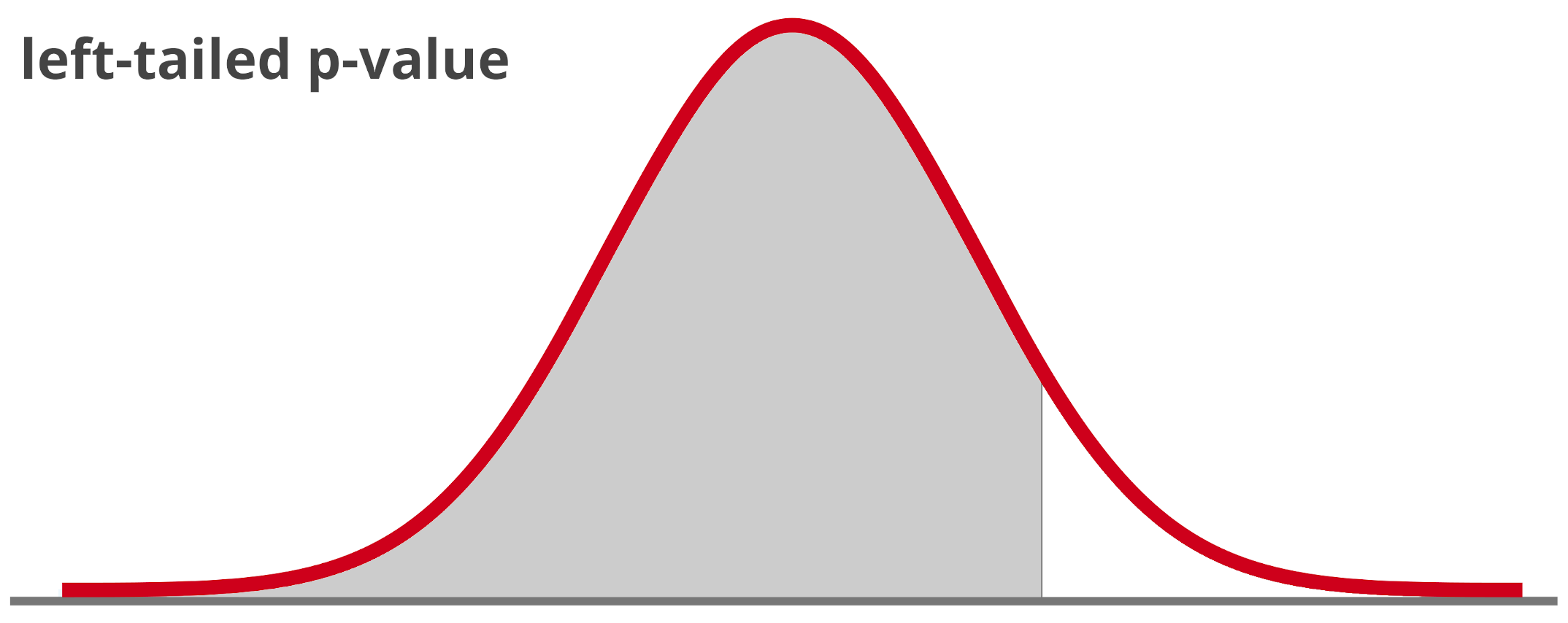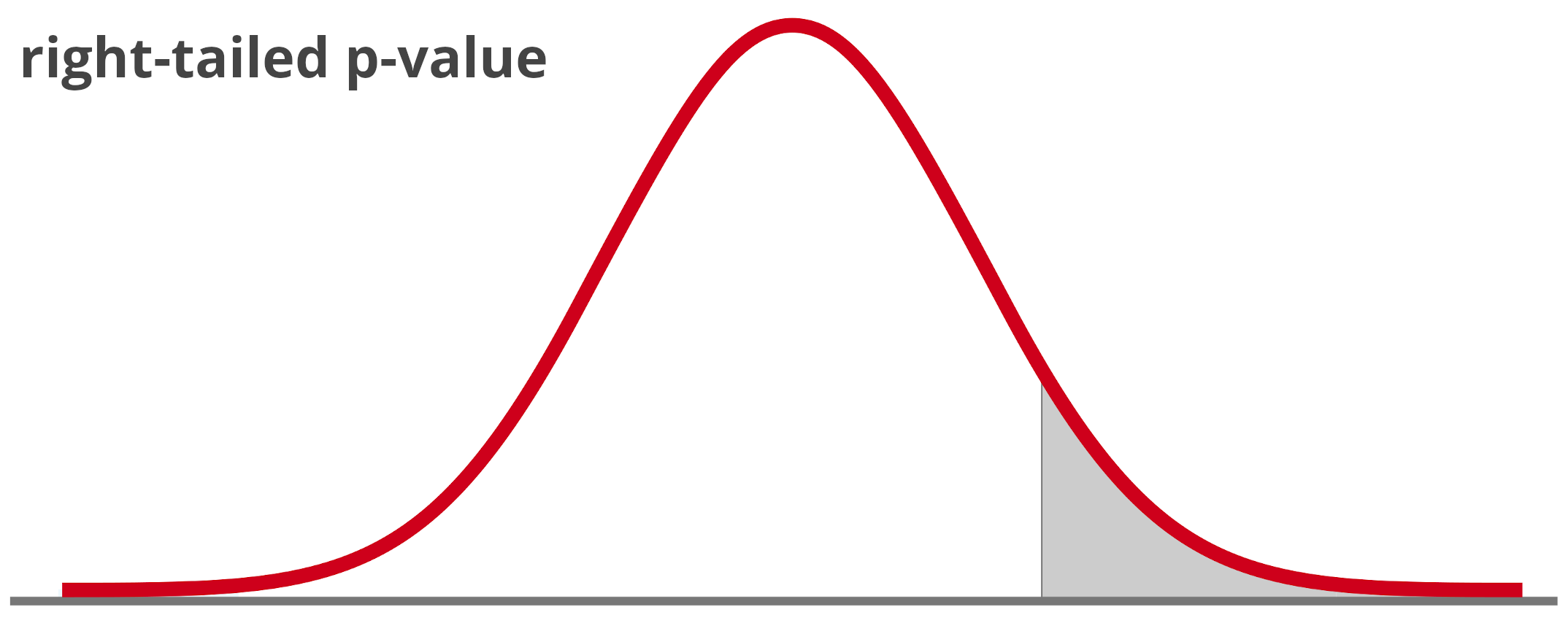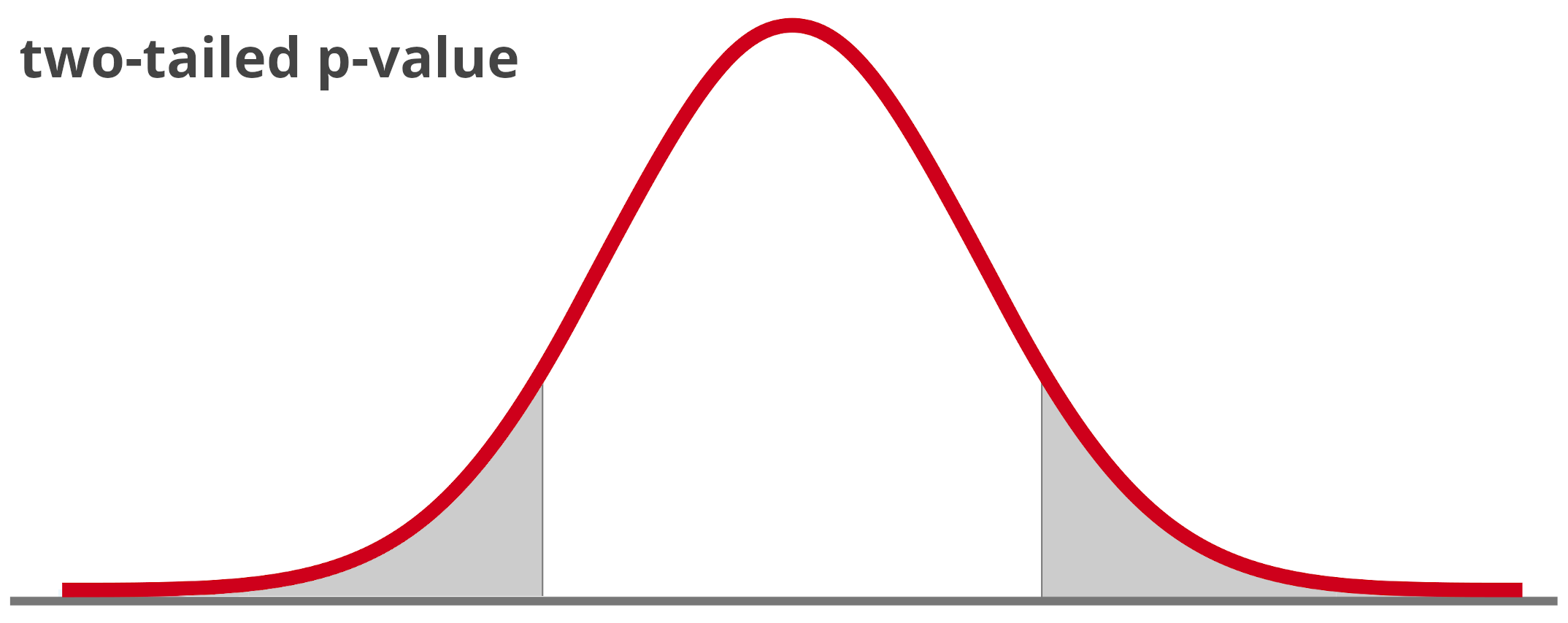P-Value Calculator
Calculate the p-value given a z-score, t-score, chi-square score, or an f-value using the calculator below.
Results:
| Left-tailed p-value: | |
|---|---|
| Right-tailed p-value: | |
| Two-tailed p-value: |
| Left-tailed p-value: | |
|---|---|
| Right-tailed p-value: | |
| Two-tailed p-value: |
| Left-tailed p-value: | |
|---|---|
| Right-tailed p-value: |
| Left-tailed p-value: | |
|---|---|
| Right-tailed p-value: |
On this page:
How to Find the P-Value
In statistics, a p-value, or probability value, is the probability of obtaining results at least as extreme as the observed results, assuming that the null hypothesis is correct. In other words, it is the probability of getting a result greater than or equal to the sample results.
Put simply, a p-value is the probability that an observation could occur by chance, which indicates the statistical significance of the observation. A small p-value indicates that an outcome is very unlikely.
A p-value lower than 0.05 often indicates that an observation is statistically significant.
P-values are often found using spreadsheet software or by using generated tables such as a z-table. But, you can also find a p-value using a formula.
P-Value Formula
The formula to find a p-value given a cumulative distribution function is:
p-value = cdf(x)
Thus, the p-value is equal to the cumulative distribution function cdf of the observed value x.
This is known as a left-tailed p-value. A left-tailed p-value is the probability that the value will be less than the sample distribution.

A right-tailed p-value is the probability that the value will be greater than the sample distribution. You can find the right-tailed p-value using a similar formula.
p-value = 1 – cdf(x)

You can find a two-tailed p-value using the following formula:
p-value = 2 × min(cdf(x), 1 – cdf(x))

How to Find the P-Value from a Z-Score
Given a z-score for a standard normal distribution, you can calculate the p-value using the standard normal distribution formula Φ.
p-value = Φ(z-score)
However, an easier way to find the p-value is to look it up using a z-table, which contains the left-tailed p-values for each z-score.
You might also be interested in our empirical rule calculator to find the amount of data within one, two, or three standard deviations of the mean.
Frequently Asked Questions
What does the p-value tell you?
The p-value tells you the probability that an observation could occur by chance, which indicates the statistical significance of the observation.
How do you know when to use p-value?
You use the p-value to see if your data is statistically significant or not.
What p-value is statistically significant?
A p-value lower than 0.05 often indicates that an observation is statistically significant.
What does a p-value of 0.05 mean?
A p-value of 0.05 means that your null hypothesis is true.


